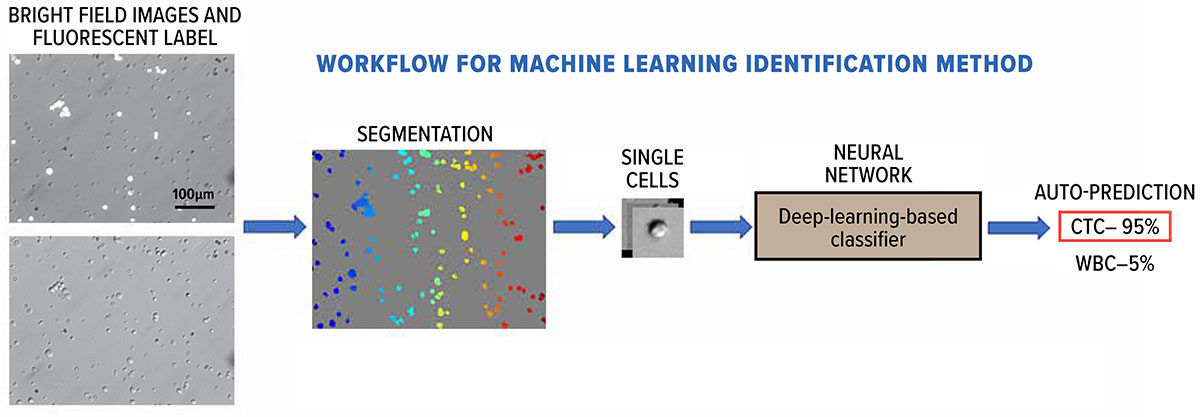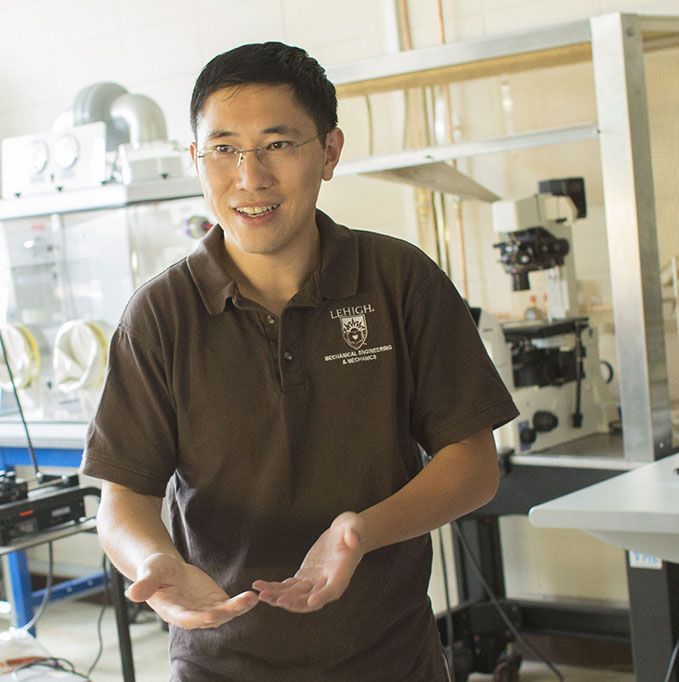
|
A deep-learning model was trained with cropped single-cell in bright field images and tuned “to reach better results until the outcome reached the state-of-the-art,” says Yaling Liu. (Shen Wang/Liu Research Lab) |
Metastasis—the development of tumor growth at a secondary site—is responsible for the majority of cancer-related deaths. It occurs when the primary tumor site sheds cancerous cells that are then circulated through the body via blood vessels or lymph nodes. These become seeds for eventual tumor growth at a secondary area in the body.
Detection of these very rare cells, known as circulating tumor cells, or CTCs, is important for early prognosis of serious disease as well as to monitor the effectiveness of treatment. Currently, only one method for CTC detection is approved by the FDA, and it relies on an expensive, time-consuming process that involves labeling antibodies with fluorescence.
Results from a recent study show the potential for a new way to detect CTCs that uses a powerful label-free detection method. Developed by bioengineering and mechanical engineering and mechanics professor Yaling Liu, in collaboration with Xiaolei Huang, a faculty member in Penn State’s College of Information Sciences and Technology, the technique applies a machine learning algorithm to bright field microscopy images of cells detected in patient blood samples containing white blood cells (WBCs) and CTCs.
The blood samples were drawn from patients in treatment for stage 4 renal cancer under the care of Dr. Suresh G. Nair, physician in chief at Lehigh Valley Cancer Institute. The model yielded a high rate of accuracy: 88.6 percent overall accuracy on patient blood and 97 percent on cultured cells. The results have been published in Nature Scientific Reports. In addition to Liu, Huang, and Nair, authors include three Lehigh PhD students: Shen Weng, Yuyuan Zhou, and Xiachen Qin.
Nair says Liu’s innovative technique to isolate rare circulating cancer cells in a tube of blood—which can number as few as 15 cells in one billion—represents “a simpler, elegant, and cost-effective approach to monitoring patients on therapies such as immunotherapy and targeted therapy for cancer at the circulating cell level rather than scans such as CAT scans, which look for 100 million or more cells organized into a one centimeter tumor.”
“This study, though small, demonstrates that our method can achieve high accuracy without the need for advanced devices or expert users, thus providing a faster and simpler way for counting and identifying CTCs,” says Liu. “With more data becoming available, the machine learning model can be further improved and serve as an accurate and easy-to-use tool for CTC analysis.”

